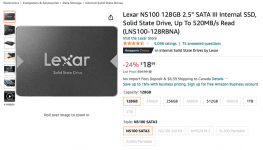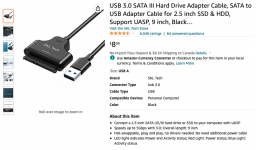aza9156
Cadet
- Joined
- Aug 20, 2022
- Messages
- 7
Good Day,
Hope you are all keeping well! My first post, hopefully I've followed the etiquette appropriately. Please ask if you need more details from me, I appreciate the hardware I have isn't the perfect selection, however I'm incrementally upgrading as I find money wedged in the sofa cushions, and learning from my mistakes.
Thanks again
Aaron
Hope you are all keeping well! My first post, hopefully I've followed the etiquette appropriately. Please ask if you need more details from me, I appreciate the hardware I have isn't the perfect selection, however I'm incrementally upgrading as I find money wedged in the sofa cushions, and learning from my mistakes.
Problem I'm having
I've run into an issue that I can't find any directly related information on and no controls or options to resolve that I am aware of in the web GUI.Dataset boot-pool/ROOT/22.02.3/***** has more snapshots (767) than recommended (512). Performance or functionality might degrade.
Steps I've taken so far
- A good afternoon of googling and forum trawling
- Checked I'm all upgraded to the lastest version of the OS
- To confirm this is the case by opening the shell and running 'zfs list -t snapshot', I didnt count all the results but can confirm there is a significant list of snapshots relating to the boot pool.
- Removed all but the most recent archived boot enviroments.
- Checked 'Data Protection > Periodic Snapshots' menu, however all snapshot settings in here relate to data pools and it is not possible to target the boot pool as an option with these setup wizards.
- Checked 'System Settings > Boot' menu for any snapshot related controls for the pool, however cant find any.
Some musings to sanity check
- My first thought is, will an SSD fix this, however the pool isn't reporting that capacity is the issue, it is just suggesting that there is too many snapshots, I'm guessing the index/database that it uses to track the snapshots could be at capacity. The flash drive still reports 3.7GB of remaining space available.
- I've been attempting to get Apps up and running to reduce my resource consumption by running VM's, however the Apps (or more specifically docker images) are spending an incredible amount of time sat in the deploying phase (36hrs+). Are boot pool snapshots part of the app deployment process, is the endless attempts at deploying constantly generating snapshots?
Thanks again
Aaron


